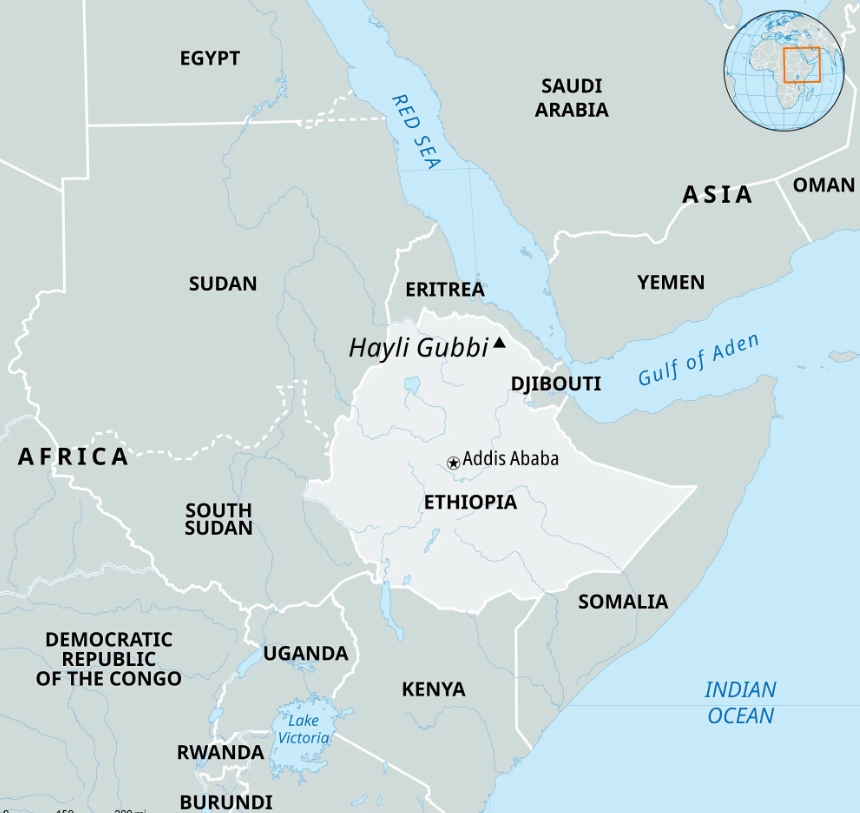Hayli Gubbi Volcano | 26 Nov 2025
Ethiopia's Hayli Gubbi volcano , dormant for over 12,000 years, erupted, sending a massive ash cloud across the Red Sea and South Asia. The thick ash cloud reached India, resulting in the diversion of several flights.
- Volcanic Eruption: It is the expulsion of gases, rock fragments, and molten lava from within the Earth through a vent, releasing them onto the surface or into the atmosphere.
- The Earth’s mantle, a dense layer beneath the solid crust, contains a weaker zone called the asthenosphere, where molten rock, known as magma, escapes.
- As gases dissolved in the magma expand, they build up pressure, which pushes the magma upward, forcing it through cracks and fissures in the volcano, resulting in an eruption.
- Products of Volcanic Eruptions: Volcanic eruption releases volcanic ash, pyroclastic debris (tiny glass/rock particles) and Nitrogen and Sulphur compounds.
Hayli Gubbi Volcano
- Type and Location: Hayli Gubbi is a shield volcano in Afar, Ethiopia, part of the Erta Ale Range.
- Situated at the edge of the East African Rift, where the African and Arabian plates are slowly diverging.
- Shield volcanoes are broad, gently sloping, formed by thin, fluid lava flows. Eruptions are usually less explosive, with lava spreading wide like a warrior’s shield. Composed mainly of dark basaltic lavas, but also contains silica-rich rocks.
- Cause of Eruption: Tectonic divergence at the East African Rift causes hot mantle rock to rise and partially melt, feeding magma chambers. Over millennia, pressure accumulation in these chambers can trigger eruptions.
| Read More: Africa's Afar Triangle: Birthplace of a Potential New Ocean |

